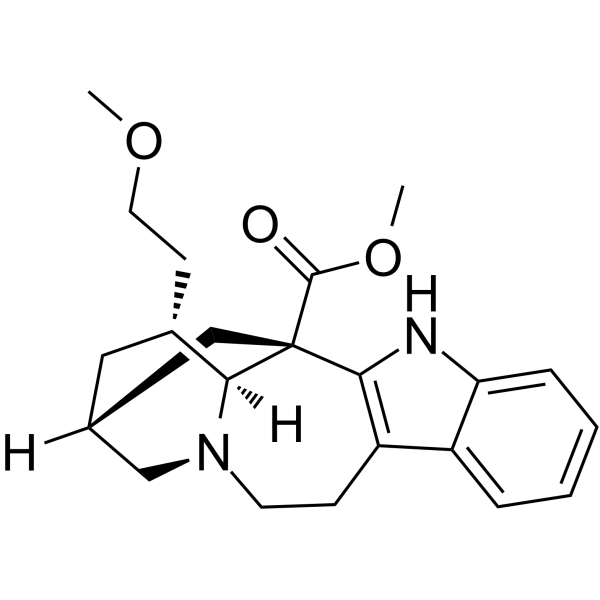188125-42-0
| Name | Zolunicant |
|---|
| Description | Zolunicant (MM-110) is a potent inhibitor against nicotinic α3β4 receptors with an IC50 of 0.90 μM to combat addiction. Zolunicant can decrease the self-administration of several addictive agents including morphine, cocaine, methamphetamine, nicotine, and ethanol in rat model. Zolunicant can be studied as a potential treatment for multiple forms of drug abuse[1]. Zolunicant also reveals a potent leishmanicide effect against Leishmania amazonensis[2]. |
|---|---|
| Related Catalog | |
| Target |
IC50: 0.90 μM (nicotinic α3β4 receptor)[1] |
| In Vitro | Zolunicant (18-MC; 0.01-100 μM) shows an inhibitory activity against nicotinic α3β4 receptors with an IC50 of 0.90 μM[1]. . Zolunicant (18-MCOR; 0-20 μg/ml; 24h) also shows antiamastigote activity against L. amazonensis-infected macrophage[2]. Cell Viability Assay[2] Cell Line: L. amazonensis-infected macrophage Concentration: 0, 1, 10,15 and 20 μg/ml Incubation Time: 24 h Result: Decreased the amastigote survival by 73, 84, and 92%, respectively in the treatment with 18-MCOR at 1, 10, or 20 μg/ml. |
| In Vivo | Zolunicant (18-MC; Intravenous administration; 0-20 μg a day;14 days) decreases morphine self-administration by blocking α3β4 nicotinic receptors in the habenulo-interpeduncular pathway[3]. Animal Model: Naïve female Long-Evans derived rats[3] Dosage: 0,10 and 20 μg Administration: Intravenous administration; once a day; 14 days Result: Infused into the medial habenula and interpeduncular nucleus decreased morphine self-administration (interpeduncular nucleus: F(5,29) = 6.89, P < 0.0001; medial habenula: F(4,28) = 3.07, P < 0.03). |
| References |
| Molecular Formula | C22H28N2O3 |
|---|---|
| Molecular Weight | 368.47 |
